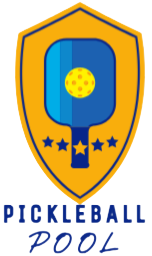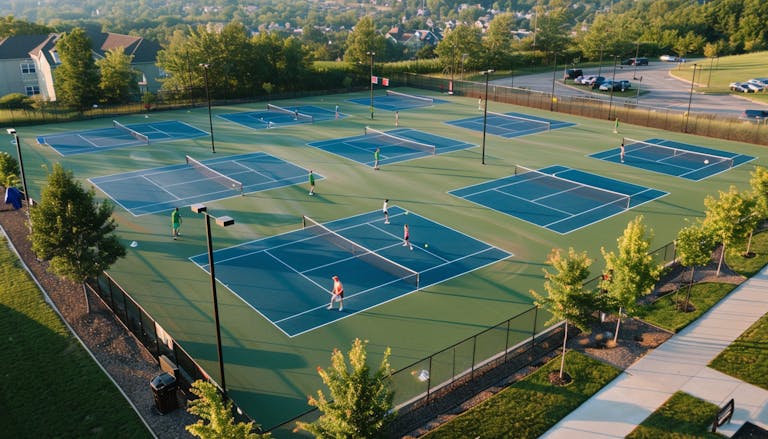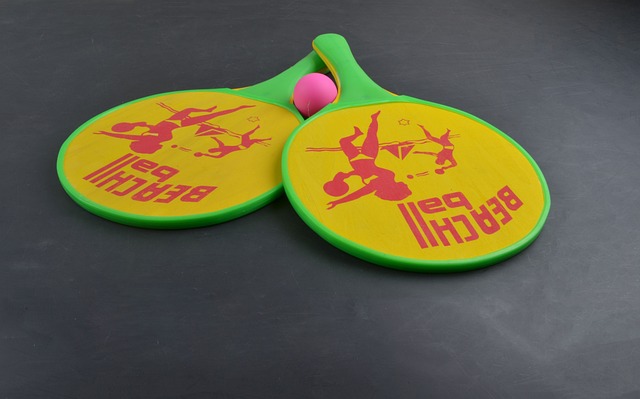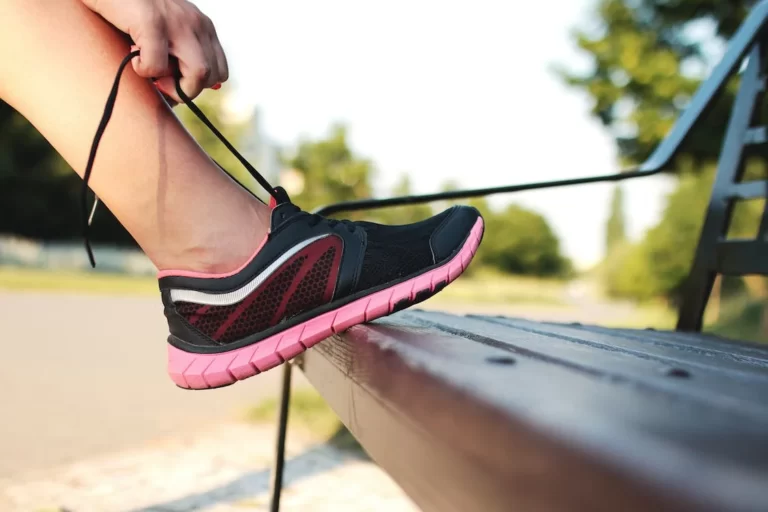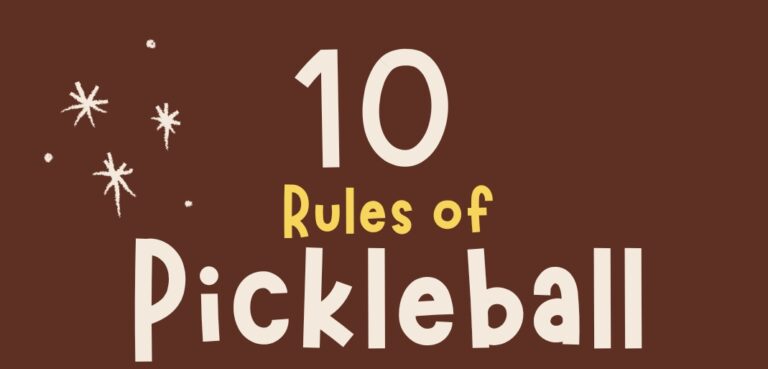Can Pickleball Courts Make money? Profitability of Pickleball Clubs and businesses
Pickleball, a dynamic blend of tennis, badminton, and ping-pong, has surged in popularity, boasting over 8.9 million players in the U.S. as of 2023 (Sports & Fitness Industry Association). This explosive growth, marked by a 158% increase in participation over three years, presents a golden opportunity for entrepreneurs. From repurposed tennis courts to sprawling indoor complexes, pickleball ventures are proving lucrative. In this guide, we’ll dissect the strategies, revenue streams, and operational insights to help you tap into this $1.3 billion industry (IBISWorld) and build a thriving business.
Why Invest in Pickleball? Market Insights & Opportunities
Unprecedented Growth:
Pickleball is the fastest-growing sport in the U.S., with a 7.8% CAGR projected through 2030 (Grand View Research).
States like Florida, Arizona, and California lead in demand, but Midwest markets (e.g., Ohio, Michigan) show untapped potential.
Demand Outpaces Supply:
Despite 44,000+ courts nationwide, peak hours see wait times exceeding 2 hours in cities like Seattle and Austin.
Indoor facilities are particularly scarce, offering year-round revenue in colder climates.
Diverse Demographic Appeal:
60% of players are aged 18–54, debunking myths of it being a “retiree sport” (SFIA).
Youth programs are rising, with schools in 22 states adding pickleball to phys-ed curricula.
Low-Cost Entry Models:
Court Conversions: Transform tennis/basketball courts for 3,000–3,000–5,000 per court (vs. $30k+ for new builds).
Pop-Up Clubs: Lease vacant warehouses or mall spaces short-term for seasonal events.
You May Also Like: Top 7 best Portable Pickleball Net for all Weathers
7 Pillars of a Profitable Pickleball Club: Strategies & Execution
1. Premier Equipment & Court Maintenance
- Equipment Quality: Stock durable paddles (Selkirk Vanguard, Joola Hyperion) and USAPA-approved nets. Partner with brands for bulk discounts.
- Court Upkeep: Resurface asphalt courts every 2–3 years (2k–2k–4k/court) and replace nets annually. Use modular tiles (e.g., Pickleball Court Supply) for indoor setups.
- Tech Integration: Install booking systems like CourtReserve ($99/month) for seamless reservations and member tracking.
2. Outshine Competitors with Unique Offerings
- Themed Events: Host “NightGlow” pickleball under LED lights or “Dink & Drink” social mixers.
- Pro Partnerships: Collaborate with pros like Simone Jardim for clinics ($150+/attendee).
- Hybrid Models: Merge with co-working spaces (e.g., Pickle & Work in Denver) for daytime office crowds.
3. Build a Loyal Community
- Membership Tiers:
- Basic: $50/month (off-peak access).
- Premium: $150/month (peak hours, free gear rentals).
- VIP: $300/month (personalized coaching, event invites).
- Engagement Tactics:
- Run “Member Mondays” with discounted drinks.
- Create a Facebook Group for league sign-ups and strategy talks.
4. Optimize Labor Costs
- Self-Service Tech: Deploy kiosks for check-ins (Reduce labor by 30%) and app-based ordering for concessions.
- Freelance Staff: Hire part-time referees or coaches during tournaments to avoid fixed salaries.
5. Minimize Food Waste & Boost Margins
- Data-Driven Inventory: Use BlueCart to track sales trends. Example: Stock 20% more electrolyte drinks during summer leagues.
- High-Profit Menu Items:
- Protein bars (80% margin).
- Craft beers ($8/pint, 70% margin).
- Pre-packaged salads ($12 each, 60% margin).
6. Financial Planning & ROI Maximization
- Revenue Benchmarks:
- A 6-court facility averages 250k–250k–500k/year with 60% occupancy.
- Add a pro shop? Boost revenue by 15–20%.
- Funding Options:
- SBA loans for 80% of startup costs.
- Crowdfunding via platforms like Mainvest for community-backed projects.
7 Revenue Streams to Maximize Profit
1. Court Rentals & Memberships
- Dynamic Pricing: Charge 40/hourweekendsvs.40/hourweekendsvs.20/weekdays. Offer punch cards ($180 for 10 sessions).
- Corporate Packages: Sell $2k/month bulk bookings to local businesses for employee wellness programs.
2. Tournaments & Events
- Charity Events: Partner with nonprofits—donate 20% of entry fees ($50/player) for tax benefits.
- Corporate Tournaments: Charge $1,500/team for branded events (e.g., “Amazon Cup”).
3. Retail Sales
- Top-Selling Gear:
- Paddles: 120–120–250 (Selkirk, Onix).
- Shoes: 90–90–160 (K-Swiss, Fila).
- Apparel: 25–25–60 (Lululemon’s pickleball line).
- Bundles: Sell “Starter Kits” (paddle, balls, bag) for $199.
4. Coaching & Clinics
- Group Lessons: 30–30–50/player for 90-minute sessions.
- Elite Training: Offer video analysis ($75/session) using SwingVision AI tech.
5. Food & Beverage Innovations
- Themed Menus: “Dink Drinks” (pickleback shots) or “Kitchen Line Sandwiches.”
- Local Partnerships: Source snacks from nearby bakeries for shared marketing.
6. Sponsorships & Brand Deals
- Court Naming Rights: Sell to local businesses (5k–5k–10k/year).
- Equipment Partnerships: Get free paddles from HEAD in exchange for exclusive retail rights.
7. Digital Monetization
- Online Coaching: Offer Zoom clinics (25/session)orsubscriptionvideolibraries(25/session)orsubscriptionvideolibraries(20/month).
- Apparel E-Commerce: Use Shopify to sell branded merch globally.
Case Studies: Real-World Success Models
Smashville Pickleball (Nashville, TN)
- Model: 12 indoor courts in a retrofitted warehouse.
- Revenue Streams:
- Leagues: $15k/month.
- Tiki Bar: $10k/month (Mai Tais + poke bowls).
- Merch: $3k/month (branded trucker hats).
- Outcome: 500+ members, breakeven in 8 months.
The Pickleball House (San Diego, CA)
- Innovation: Rooftop courts with ocean views.
- Upsell Strategy: Sunset clinics ($75/person) with wine tastings.
- Revenue: $1.2M annually, 35% from F&B.
Overcoming Challenges: Pitfalls & Solutions
- Zoning & Noise Complaints:
- Install sound-dampening fences (8k–8k–15k).
- Limit play hours in residential areas.
- Seasonal Downturns:
- Host holiday camps or indoor leagues.
- Rent courts for off-season events (e.g., yoga classes).
- High Insurance Costs:
- Use insurers like Philadelphia Insurance (sports-specific policies at 3k–3k–5k/year).
How To Invest And Make Money In Pickleball (Revenue Streams for Pickleball Businesses)
1. Coaching and instruction
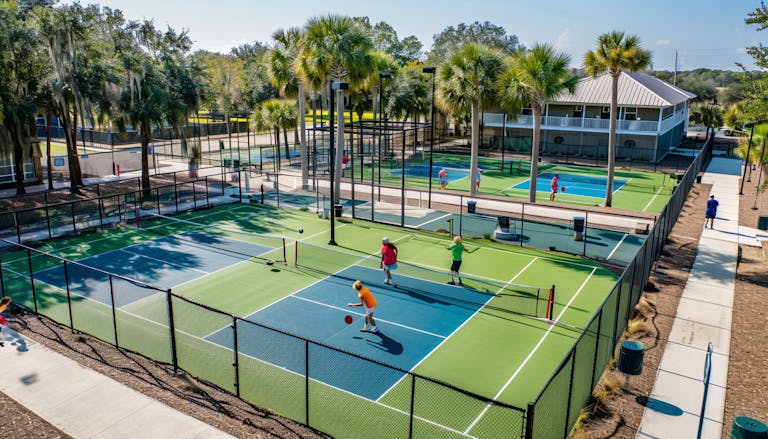
If you’re good at pickleball, you can coach people or groups. Many people want to improve their skills and are willing to pay for coaching. Coaches can make at least $50 per hour, and sometimes more.
In San Francisco, a friend charges $140 per hour for group lessons. To teach pickleball, you need to book courts, know the rules, and be a skilled player.
2. Selling equipment and gear
One option is to sell pickleball gear like paddles, balls, clothing, and court supplies. You can start by creating an online store, going to sports events, or working with local stores. There is a lot of potential for new ideas and improvements in pickleball paddles. This is a good time to come up with new technologies and designs for the market.
3. Sponsorships and partnerships
As you gain recognition in pickleball, you may receive sponsorship offers from brands. This involves getting money or free products in exchange for promoting the brand. For instance, I know a person sponsored by Picklefuel, a sports drink, and another by Selkirk, a pickleball paddle. As pickleball grows in popularity, more companies will provide sponsorships.
4. Membership Fees
Pickleball businesses can earn steady money through membership fees. People pay a fee to join a pickleball club or facility and receive benefits like court reservations and discounts. Different membership levels are available at different prices, offering more perks to higher-paying members.
Membership fees provide reliable income for businesses, helping with planning and growth. Collecting member information helps businesses understand and market to their customers.
You May Also Like: 7 BEST PICKLEBALL BAGS WITH SHOE COMPARTMENTS FOR WOMEN
5. Court Rentals
Pickleball businesses can earn money by renting out their courts to players or groups. This allows non-members to use the courts for a fee. Businesses can charge hourly or daily rates, with different prices for members and non-members. Court rentals bring in extra income in addition to membership fees and allow non-members to try out the facility.
Businesses can promote court rentals to local clubs, tournaments, or anyone seeking a place to play pickleball. Renting courts is a simple way to make more money and utilize the facility efficiently.
6. Serve food and drinks
Pickleball businesses make money by serving food and drinks. They can have a cafe or snack bar at their facility, selling drinks and snacks to players. Options include water, sports drinks, protein bars, fruit, sandwiches, and salads.
This is convenient for players and makes extra money. Businesses can work with local vendors or hire staff to handle the food and drinks. They can also cater events or tournaments. By providing food and drinks, pickleball places can improve the player experience and make more money.
Most Profitable Aspects of a Pickleball Club
- Offer enticing memberships like country clubs for profitable pickleball club
- Provide delicious menus for food sales appealing to families
- Increase sales by offering a variety of alcoholic drinks
- Offer catering services for bulk purchases for events
- Use pickleball club management software for efficient operations and cost savings
Conclusion: Can Pickleball Courts Make Money?
The pickleball revolution is here, and the financial opportunities are vast. By combining strategic location choices, tech-driven operations, and community-focused marketing, your club can thrive. Whether you’re converting a local park or launching a high-end resort-style facility, the key lies in adaptability and innovation.
FAQs: Addressing Investor Concerns
Q: What’s the breakeven timeline for a 6-court club?
A: 12–18 months with 50% occupancy and diversified revenue.
Q: How to attract younger players?
A: Launch TikTok challenges (#PickleballTricks) and college leagues.
Q: Are franchises worth it?
A: Yes—Chicken N Pickle franchises average $4M/year with 20% EBITDA margins.
Q: What permits are needed?
A: Business license, health department approval (for F&B), and ADA compliance certification.
